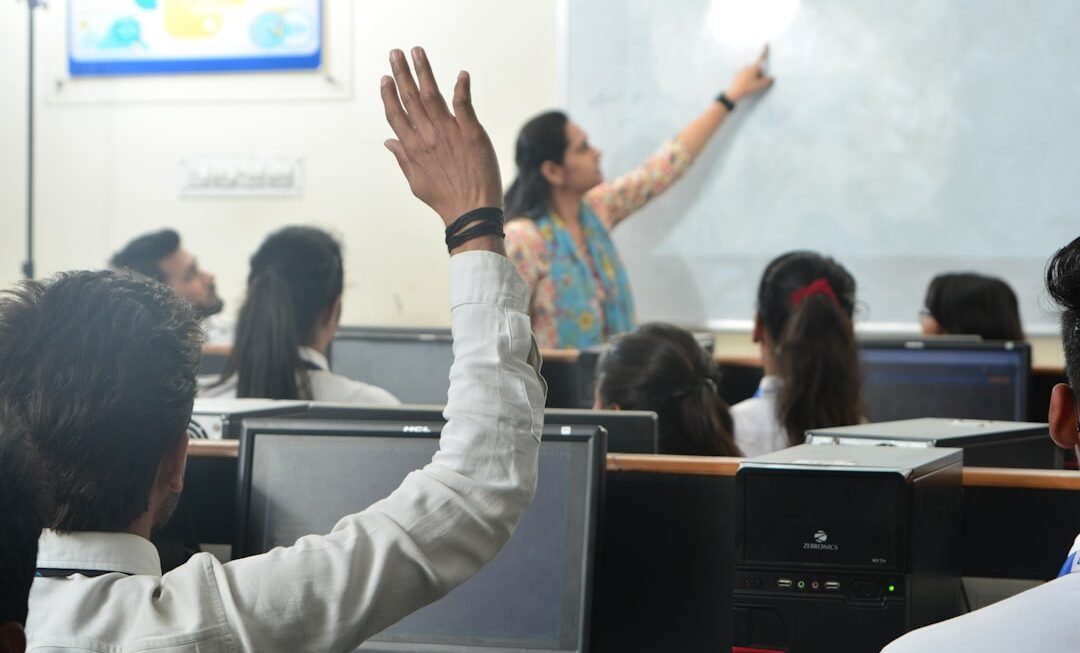The landscape of education has undergone a seismic shift in recent years, with online education emerging as a dominant force. This transformation has been fueled by advancements in technology, the proliferation of the internet, and a growing demand for flexible learning options. Institutions ranging from prestigious universities to community colleges have embraced online platforms, offering a diverse array of courses that cater to various learning styles and schedules.
The COVID-19 pandemic acted as a catalyst, accelerating the adoption of online learning as schools and universities were compelled to pivot to remote instruction almost overnight. This sudden shift highlighted the potential of online education to reach students who may have previously been unable to attend traditional classes due to geographical, financial, or personal constraints. As a result, online education has not only expanded access to learning but has also democratized it.
Students from different backgrounds can now enroll in courses that were once limited to specific demographics or locations. The rise of Massive Open Online Courses (MOOCs) exemplifies this trend, allowing thousands of learners to participate in courses offered by top-tier institutions without the barriers of cost or location. Furthermore, the flexibility of online education enables learners to balance their studies with work and family commitments, making it an attractive option for adult learners and professionals seeking to upskill or change careers.
This evolution in educational delivery has prompted educators and institutions to rethink traditional pedagogical approaches, leading to innovative teaching methods that leverage technology to enhance the learning experience.
Key Takeaways
- Online education has seen a significant rise in recent years, offering flexibility and accessibility to learners worldwide.
- Challenges of online assessment include ensuring integrity, preventing cheating, and maintaining academic standards.
- Automated assessment and proctoring technologies provide solutions for monitoring and evaluating online exams.
- Automated assessment works by using algorithms to grade assignments and detect potential cheating behaviors.
- Proctoring plays a crucial role in online exams by monitoring students and ensuring exam integrity.
The Challenges of Online Assessment
While online education has opened new avenues for learning, it has also introduced significant challenges, particularly in the realm of assessment. Traditional assessment methods, such as in-person exams and quizzes, are often difficult to replicate in an online environment. One of the primary concerns is ensuring that assessments accurately measure a student’s knowledge and skills without the risk of academic dishonesty.
The anonymity and accessibility of online platforms can create opportunities for cheating, raising questions about the validity of grades and the integrity of the educational process. Moreover, the design of online assessments poses unique challenges. Educators must consider how to create assessments that are not only fair and comprehensive but also engaging for students.
The lack of face-to-face interaction can make it difficult for instructors to gauge student understanding and provide immediate feedback. Additionally, technical issues such as internet connectivity problems or software malfunctions can disrupt the assessment process, leading to frustration for both students and educators. As a result, institutions must navigate these complexities while striving to maintain high standards of academic integrity and rigor in their assessment practices.
Understanding Automated Assessment and Proctoring
In response to the challenges associated with online assessment, many educational institutions have turned to automated assessment and proctoring solutions. Automated assessment refers to the use of technology to evaluate student performance through various means, such as quizzes, exams, and assignments that are graded by algorithms rather than human instructors. This approach can streamline the grading process, providing immediate feedback to students and freeing up educators’ time for more personalized instruction.
Proctoring, on the other hand, involves monitoring students during assessments to ensure compliance with academic integrity standards. Traditional proctoring methods often require physical presence, which is impractical in an online setting. Consequently, remote proctoring solutions have emerged, utilizing technology such as webcam monitoring, screen recording, and artificial intelligence to oversee students during exams.
These systems aim to replicate the oversight typically provided by in-person proctors while addressing the unique challenges posed by online assessments. Together, automated assessment and proctoring represent a significant evolution in how educational institutions evaluate student performance in a digital age.
How Automated Assessment Works
Automated assessment systems leverage sophisticated algorithms and artificial intelligence to evaluate student responses efficiently. These systems can handle a variety of question formats, including multiple-choice questions, fill-in-the-blank exercises, and even essay submissions through advanced natural language processing techniques. When a student submits an assessment, the automated system analyzes their responses against predetermined criteria or rubrics, assigning scores based on accuracy and completeness.
One notable advantage of automated assessment is its ability to provide instant feedback. Students can receive immediate results upon completion of an exam or assignment, allowing them to identify areas for improvement without delay. This rapid feedback loop is particularly beneficial in online learning environments where timely communication can enhance student engagement and motivation.
Additionally, automated systems can track student performance over time, generating valuable data that educators can use to tailor instruction and support individual learning needs.
The Role of Proctoring in Online Exams
Proctoring plays a crucial role in maintaining the integrity of online exams by ensuring that students adhere to academic honesty standards during assessments. In traditional settings, proctors physically monitor students to prevent cheating; however, remote proctoring employs technology to achieve similar oversight from a distance. Various methods are utilized in remote proctoring solutions, including live monitoring by human proctors via webcam and automated systems that use artificial intelligence to detect suspicious behavior.
For instance, some proctoring software requires students to show their identification before starting an exam and may even scan their surroundings using their webcam to ensure no unauthorized materials are present. During the exam, the software can track eye movements and keystrokes to identify any irregularities that may indicate cheating. This level of scrutiny aims to create a secure testing environment that mirrors the integrity expected in traditional assessments while accommodating the unique challenges posed by online learning.
Ensuring Integrity in Online Exams
Fostering a Culture of Integrity
Institutions can foster academic honesty by clearly communicating expectations regarding assessments and providing resources on ethical behavior in academic settings. Educators should emphasize the importance of integrity not only for individual success but also for maintaining the value of their degrees.
Encouraging Personal Responsibility
Additionally, incorporating honor codes or integrity pledges into the assessment process can encourage students to take personal responsibility for their actions during exams. This approach can help students understand the significance of academic integrity and its impact on their academic journey.
Enhancing Credibility and Empowering Students
By creating an environment that prioritizes honesty and accountability, institutions can enhance the credibility of their online assessments while empowering students to engage with their learning authentically. This approach can lead to a more trustworthy and reliable assessment process, ultimately benefiting both the institution and its students.
Benefits of Automated Assessment and Proctoring
The adoption of automated assessment and proctoring offers numerous benefits for both educators and students within the realm of online education. One significant advantage is efficiency; automated systems can grade assessments quickly and accurately, allowing educators to focus on providing meaningful feedback rather than spending hours on manual grading. This efficiency not only saves time but also enables instructors to offer more personalized support based on individual student performance data.
Furthermore, automated assessment tools can enhance accessibility for diverse learners. For instance, students with disabilities may benefit from adaptive technologies that tailor assessments to their specific needs. Additionally, automated systems can accommodate various learning styles by offering different question formats and interactive elements that engage students more effectively than traditional assessments.
Addressing Concerns and Criticisms
Despite the advantages of automated assessment and proctoring, there are valid concerns and criticisms surrounding these technologies that must be addressed. One major issue is the potential for bias within automated grading systems. Algorithms are only as good as the data they are trained on; if these systems are not designed with diversity in mind, they may inadvertently disadvantage certain groups of students or fail to recognize nuanced responses in open-ended questions.
Additionally, privacy concerns arise with remote proctoring solutions that require extensive monitoring of students during exams. The collection of personal data through webcam feeds and screen recordings raises ethical questions about consent and data security. Institutions must ensure that they are transparent about how student data is used and stored while implementing robust security measures to protect sensitive information from breaches or misuse.
Best Practices for Implementing Automated Assessment and Proctoring
To maximize the effectiveness of automated assessment and proctoring solutions, educational institutions should adhere to best practices during implementation. First and foremost, thorough training for both educators and students is essential. Instructors should be well-versed in how to design assessments that align with automated grading systems while understanding how proctoring technologies function.
Similarly, students need clear guidance on what to expect during online assessments and how to navigate any technical requirements.
Conducting trials allows educators to identify potential issues and gather feedback from students regarding their experiences with automated assessments and proctoring solutions.
Continuous evaluation is crucial; institutions should regularly assess the effectiveness of these tools in measuring student performance while remaining open to making adjustments based on user feedback.
The Future of Online Assessment
The future of online assessment is poised for further innovation as technology continues to evolve at a rapid pace. Emerging trends such as adaptive learning technologies promise personalized assessment experiences tailored to individual student needs. These systems can adjust question difficulty based on real-time performance data, ensuring that assessments remain challenging yet achievable for each learner.
Additionally, advancements in artificial intelligence may lead to more sophisticated automated grading systems capable of evaluating complex responses with greater accuracy. As machine learning algorithms improve, they could potentially recognize patterns in student writing or problem-solving approaches that human graders might overlook. Furthermore, as educational institutions increasingly embrace hybrid models that combine online and face-to-face instruction, assessment strategies will likely evolve to reflect this blended approach.
Embracing the Potential of Automated Assessment and Proctoring
The rise of online education has transformed how we think about teaching and learning, presenting both opportunities and challenges in assessment practices. Automated assessment and proctoring technologies offer promising solutions for maintaining academic integrity while enhancing efficiency and accessibility in evaluations. By addressing concerns related to bias and privacy while implementing best practices for these technologies’ use, educational institutions can harness their potential effectively.
As we look toward the future of online assessment, it is essential for educators and institutions to remain adaptable and open-minded about integrating new technologies into their practices. Embracing innovation while prioritizing student success will ultimately shape a more equitable and effective educational landscape for all learners.












